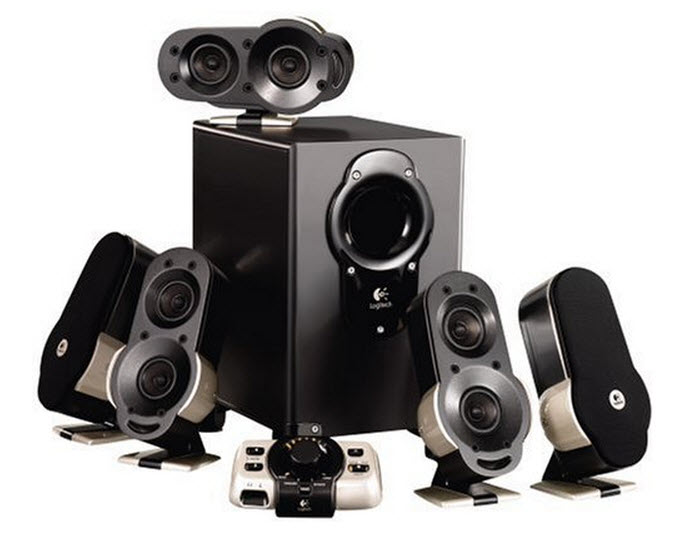

Speakers come in a wide range of shapes and sizes with various configurations. Each type is suitable for a different setting and capable of getting a specific electrical audio signal. This varied classification of speakers is one of the reasons why selecting a worthy one is confusing for many people. After all, the type of speaker you select will determine the quality of sound you’ll get.
Speakers are divided on the basis of their design, purpose, construction and the type of driver used. The following guide will help you understand the different categories of speakers so that you can choose a good equipment according to your needs and preferences.
Types of Speakers on the Basis of Design and Purpose
1) Standing Speakers
Standing or floor-standing speakers are the largest type of speakers. They have larger cabinets and their design makes them easily recognizable. As the name suggests, they stand on the floor and have the ability to house a greater number of drivers due to their larger cabinets. Their high capacity of drivers enables them to provide improved sound quality with an extraordinary bass response. People consider buying standing speakers because of their versatility with placement and application.
2) In-Wall/ Ceiling Speakers
In-wall or in-ceiling speakers are designed to be used inside an enclosed space to preserve the room’s décor. These speakers are mounted in a frame and set into your room’s ceiling or wall. They work like a regular speaker and produce high-quality sound but are hidden from the view. In-wall or in-ceiling speakers are ideal for people who have less floor space and want to give a streamlined look to their home.
3) Soundbars
Soundbars are mini speakers that offer dynamic sound from your television. You don’t need to place them on the floor or mount them in the walls or ceiling. Their sleek design and portability make these speakers ideal to be paired with LCD and LED TVs. These all-in-one items provide high-quality sound without requiring the expense and complexity of a huge home theatre setup.
4) Wall/ Ceiling Mounted Speakers
Also known as custom-install speakers, these gadgets are designed to blend into their surroundings. Unlike in-wall/ ceiling speakers, they are not concealed inside the wall or ceiling, rather they are mounted on a surface. They are commonly used for home entertainment systems for small and medium-sized rooms.
Types of Speakers on the Basis of Construction and Drivers Used
1) Dynamic Speakers
Dynamic speakers are the most widely used type of speaker. They have one or more woofer drivers and tweeter drivers to produce low-frequency sound (bass) and high-frequency sound (treble) respectively. Some professional dynamic speakers have drivers on the speaker enclosure’s rear to offer superior quality sound.
2) Horn Speakers
In horn speakers or horn loudspeakers, an acoustic horn is used to increase the efficiency of the driver. These speakers use the similar drivers as used in dynamic speakers that are arranged at the end of the cone. Within these speakers, the driver produces sound waves with a metal diaphragm vibrated by an electromagnet. It is a good choice for people who want to transmit sound in large areas efficiently.
3) Subwoofer Speakers
Subwoofer speakers have a single woofer driver. They are designed to produce low-pitched audio frequencies called bass or sub-bass. The frequency range for consumer products is 20 Hz to 200 Hz and for professional live sound, it is below 100 Hz. They are also used to enhance bass of loudspeakers covering higher frequency bands.
4) Electrostatic Speakers
Electrostatic speakers are like flat-panel loudspeakers or diaphragm speakers. They have one driver and a thin membrane coated with a conductive material sandwiched between two electrically conductive grips. They produce sound when force is exerted on the membrane suspended in an electrostatic field. These speakers deliver crisp and detailed sound. But, they are not considered a good option for low-frequency sound or bass because of the limited movement of the membrane.
There are several types of speakers available online and in store. Each one has distinct configurations and produces a specific type of sound. When buying a suitable speaker, consider the type of sound you want and what is the purpose of your purchase. Use the above-mentioned guide to select a high-quality speaker that will suit your needs.
Browse Front PageShare Your IdeaComments
Read Elephant’s Best Articles of the Week here.
Readers voted with your hearts, comments, views, and shares:
Click here to see which Writers & Issues Won.








